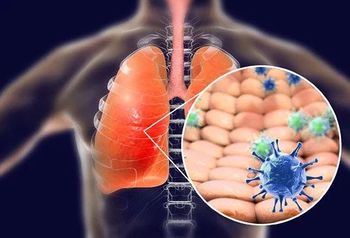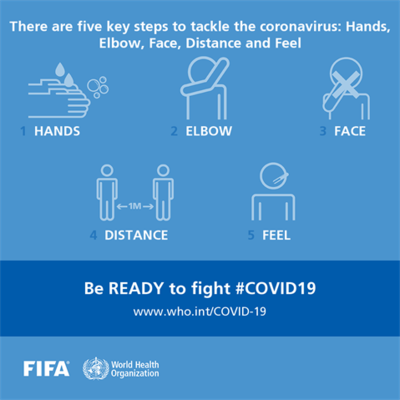Coronavirus Disease 2019 (COVID-19)
The 2019 novel coronavirus, also known as 2019-nCoV or Wuhan coronavirus, is the virus causing the 2019–20 Wuhan coronavirus outbreak.
See also :
Contents
Symptoms
Reported symptoms have included fever, fatigue, dry cough, shortness of breath, and respiratory distress, and could progress to pneumonia, kidney failure and death in severe infection. In a statement issued on 23 January 2020, WHO Director-General Tedros Adhanom Ghebreyesus stated a quarter of those infected experienced severe disease, and many of those who died had other conditions which impaired their immune system, like hypertension, diabetes or cardiovascular disease. Among the majority of those hospitalised, vital signs were stable on admission, and they had low white blood cells and low lymphocytes.
Protective Rules
Stimulating Immunity and Supporting Traditional medicine
- Spirulina C-Phycocyanin inhibits the NSP12 required for replication of SARS / COVID-19
- Based on traditional TCM protocols, 4 major concoctions showed efficacy including the Qing Fei Pai Du Tang (Qingfei Paidu detoction), Gancaoganjiang decoction (Gan Cao Gan Jiang Tang), She Gan Ma Huang Tang Sheganmahuang decoction and the Qing Fei Tou Xie Fu Zheng Qingfei Touxie Fuzheng decoction. (Any TCM shops in Thailand, Taiwan, Hong Kong, Singapore and Malaysia will know how to prepare this mixture of herbs). In all the concoctions, Licorice root was the main ingredient used in a larger proportion.
- Qing Fei Pai Du Tang is a combination of four classic remedies, described in the 2000-year-old manuscript, Shang Han Lun by Zhang Zhongjing: Ma Xing Shi Gan Tang, She Gan Ma Huang Tang, Xiao Chai Hu Tang and Wu Ling San.
- Yu Ping Feng San was the basic herbal formula recommended by Chinese health authorities to the public for prevention of SARS several years ago when SARS occured in China. In the verge of a superflu pandemic, we would recommend its use for strengthening our defense to any possible flu outbreak.
- The Institute of Chinese Medicine shows that the following herbal combination is promising in the prevention of SARS particularly among high-risk groups. It is a combination of 2 chinese patent medecines Sang Ju Yin and Yu Ping Feng San with additional 2 herbs : Herbal Formula containing :
- Sang Ye (Folium Mori)
- Ju Hua (Flos Chrysanthemi)
- Xing Ren (Semen Armeniacae Amarum)
- Lian Qiao (Fructus Forsythiae)
- Bo He (Herba Menthae)
- Jie Geng (Radix Platycodonis)
- Gan Cao (Radix Glycyrrhizae)
- Lu Gen (Rhizoma Phragmitis)
- Huang Qi (Radix Astragali)
- Fang Feng (Radix Saposhnikoviae)
- Da Qing Ye (Folium Isatidis)
- Huang Qin (Radix Scutellaria)
- Licorice : research found glycyrrhizic acid, glycyrrhizin, glycyrrhetinic acid and their derivatives to inhibit viruses that include SARS coronavirus, herpes, HIV, hepatitis, influenza.
- Astragalus (Astragalus propinquus) this has been shown to be effective against the H1N1 influenza and is used by herbalists worldwide to support to overall immune health. 4 anti-viral properties of andrographis”: it prevents the virus entering cells, reduces virus cell division, boosts immunity, and ameliorates lung inflammation from viral infection..
- Panax Ginseng is mentioned here because it is relied upon to protect a person from disease; it is also considered important in treating serious lung diseases. It is used to tonify the qi, improve digestion, strengthen the lungs, alleviate coughing, and calm the mind. Substitutes include Codonopsis (C. pilosula) and Pseudostellaria (P. heterophylla).
- Tremella fuciformis (white fungus, silver ear : It is used to nourish the yin, tonify the lung, eliminate sputum, relieve cough, and calm the mind.is a tonic that is considered beneficial as a food to prevent illness and is also commonly used to resolve lung ailments.
- Chrysanthemum (Chrysanthemum morifolium) is used to treat "wind-heat" syndromes, such as influenza, with symptoms of fever, sore throat, and cough, somewhat like what is experienced with early stage of SARS. It is used to dispel wind-heat, applied in early stage of febrile diseases. Some people prefer to use wild chrysanthemum (C. indicum), which has a smaller white flower.
- Andrographis (Andrographis peniculata; green chiretta). It is used to treat toxic heat syndromes, with the effect of alleviating fever, cough, and sore throat. It is a potent bitter herb that is used to treat infections; it has become a popular remedy for common cold and flu. Andrographis is classified in the Chinese system as an anti-toxin herb, where a toxin can refer to an infectious organism (pathogen)
- Red Algae produce mannose-binding lectins, which allow the algae to protect themselves from invasion by viruses. The coronavirus is surrounded by a glycoprotein shell that protects the virus. Red algae is able to penetrate this glycoprotein shell and halt replication of the virus as a result. It also has been shown to create viral immunity.
- Baikal Skullcap is a highly effective natural antiviral remedy. In his book Herbal Antivirals, Stephen Harrod Buhner cites Skullcap as one of the best remedies, citing its effectiveness against Epstein-Barr, adeno viruses, avian flu, hepatitis, SARS, and polio.
- Immune Boosting Foods :
- food that boost the immune system included green vegetables, dairy products, kiwi fruit, lemons and oranges, as well as nuts like almonds and cashew, which were high in vitamins and antioxidants.
- Even cooked poultry and shellfish are important immune boosters due to the protein and zinc they provide. Shellfish that are high in zinc include crab, clams, lobster and mussels. However, observe the daily recommended amount (11mg for men and 8mg for women). Too much zinc can inhibit the immune system.
- Deficiencies in Vitamin D may lead to poor bone growth, cardiovascular problems and a weak immune system. “Choose supplements that contain D3 (cholecalciferol), since it’s good for raising your blood levels of Vitamin D.
- Nutritionist Dr Sareena Hanim Hamzah said a balanced diet comprising carbohydrates, protein, fat, vitamins and minerals, as well drinking enough water, were essential to boosting the immune system.
- Fruits and vegetables of various colours are important for the body to replenish and strengthen one’s immunity. Fruits and vegetables contain Vitamin C, E and antioxidants that can enhance the immune system to fight against infections and pathogens. She said citrus fruits and berries were among the best for strengthening the immune system. For vegetables, she recommended bell peppers, broccoli and spinach.
- Star Anise : The flower-shaped spice contains shikimic acid that is used as a base material for the production of Tamiflu, which is used for influenza virus. It is super powerful as an anti-viral. Take star anise and boil it in water and add it to your teas like green tea or black tea.
- Garlic (Allium sativum). A food and a medicine this have been shown to be effective against both influenza A and B as well as viral pneumonia and rhinovirus.
- Elderberry : According to a study from the University of Sydney, elderberries do have antiviral properties, and they can fight a virus once an infection has already occurred. They also enhance the immune system.
- Lomatium is currently used as an antiviral remedy to treat colds, coughs, and infections. The herb is also known for boosting the immune system and reducing inflammation. It is one of the most potent M2 inhibitors known, stronger than pharmaceuticals. Use of the M2 channel is specific to the influenza A virus, which is why the development of blockers for it was considered crucial. Lomatium root has been used as an effective anti-viral and anti-bacterial remedy, it is especially useful in the treatment of respiratory and urinary infections.
- Osha (Ligusticum porteri) Another very potent antiviral with specific use for influenza, it is also an excellent choice for severe influenza.
- Mullein : Known as Verbascum thapsus, its Latin name, mullein is considered beneficial for the lungs because it is an expectorant.
- Homeopathy :
- Prophylaxis : The medicine that can prove to be a prophylactic in this pneumonia is Chelidonium majus. This medicine can be taken by people working closely with SARS patients like doctors, nurses, relatives and colleagues of known patients.
- First Stage : The medicines that can help most of the SARS cases in the initial phase are Aconitum napellus, Arsenicum Album, and Belladonna. Of these, Aconite will prove most important in aborting the disease when given at the onset of flu-like symptoms. This medicine should be given as soon as one experiences flu-like symptoms.
- Second Stage : When the symptoms of pneumonia are well apparent, then the medicines that can prove to be of maximum value in current outbreak are Natrum sulphuricum, Phosphorus (homeopathy), Chelidonium, and Bryonia alba.
- Third Stage : If the patient is terminally ill with threatened respiratory failure, the medicines that can help to save many lives are Crotalus Horridus, Lachesis, Ailanthus glandulosa, and Muriatic acid.
References
- "上海药物所和上海科技大学联合发现一批可能对新型肺炎有治疗作用的老药和中药" (in Chinese). People's Republic of China: Chinese Academy of Sciences. 25 January 2020.
- "WHO says new China coronavirus could spread, warns hospitals worldwide". Reuters. 14 January 2020. Retrieved 21 January 2020.
- Paules, Catharine I.; Marston, Hilary D.; Fauci, Anthony S. (23 January 2020). "Coronavirus Infections—More Than Just the Common Cold". JAMA. doi:10.1001/jama.2020.0757. PMID 31971553.
- http://www.itmonline.org/arts/sars.htm
- https://www.nst.com.my/news/nation/2020/01/560946/make-sure-immune-system-strong-and-fit-fight
Medical Disclaimer
This information is not meant to be substituted for medical advice. Always consult a medical professional regarding any medical problems and before undertaking any treatment or dietary changes.

